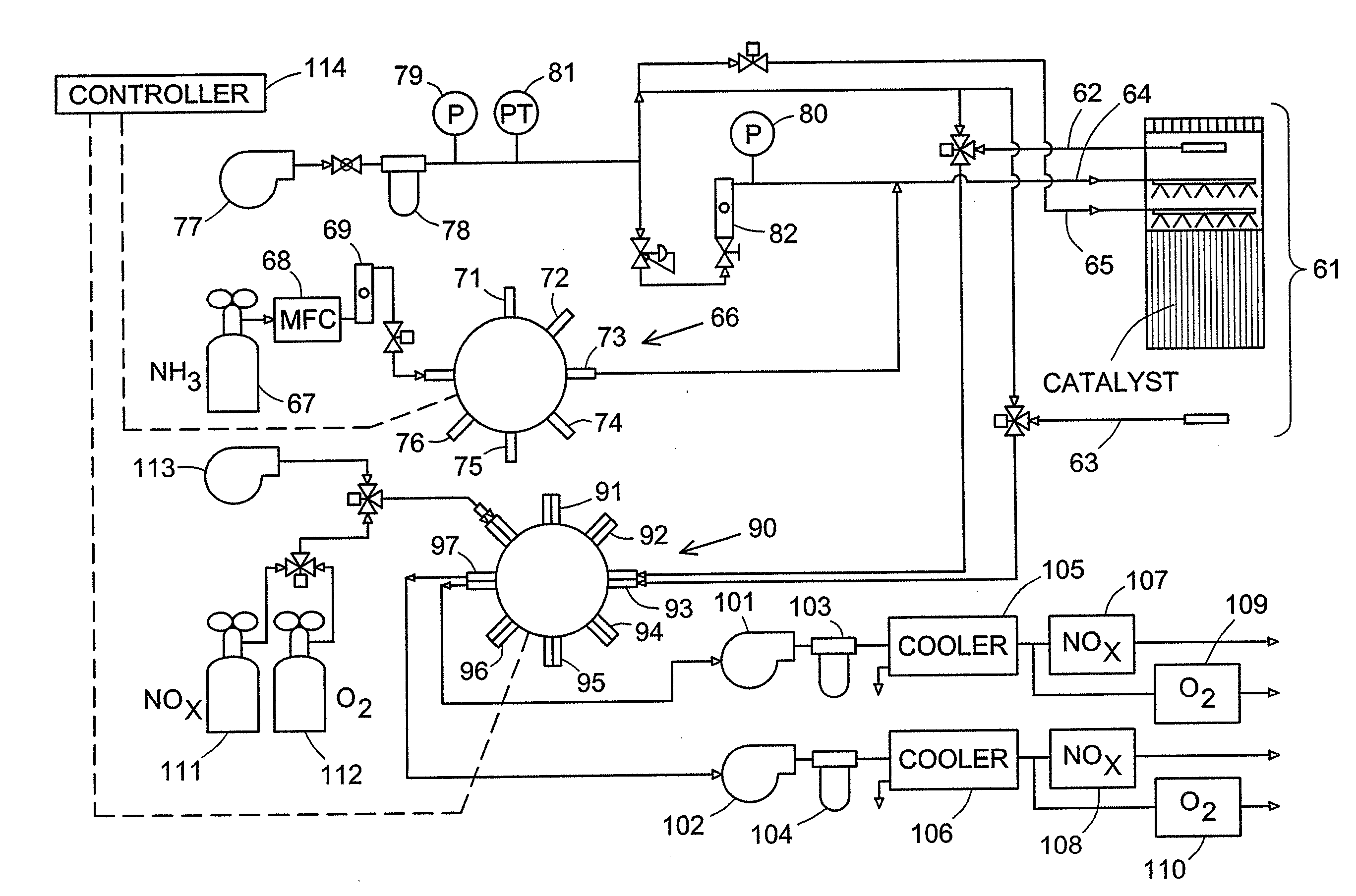In-Line Localized Monitoring of Catalyst Activity in Selective Catalytic NOx Reduction Systems
a selective catalytic and catalyst technology, applied in the direction of chemical methods analysis, separation processes, instruments, etc., can solve the problems of reducing the efficiency of the catalyst, the risk of pollution, and the unreacted ammonia leaving the unit, so as to reduce or eliminate the deficiencies of the prior art method
- Summary
- Abstract
- Description
- Claims
- Application Information
AI Technical Summary
Benefits of technology
Problems solved by technology
Method used
Image
Examples
example
[0045]An example of a three-layer SCR unit is one that has flue gas flowing through the unit at a space velocity of 2,500 hour−1 (the volumetric flow rate of the gas at standard temperature and pressure divided by the catalyst volume) and a linear gas velocity of 15 ft / sec (4.6 m / sec), and whose inlet NOx level is 0.41 lb / 106 Btu (300 ppm at 3% O2), whose inlet NH3 / NOx mole ratio is 0.9, and whose temperature is 700° F. (370° C.). The gas flowing across the individual catalyst layers has the following composition parameters:
Bed No.:123Inlet:mole ratio NH3 / NOx0.900.470.7ppm NOx3005732moles / min NOx0.00130.00020.0001Outlet:mole ratio NH3 / NOx0.470.07ppm NOx573230ppm NH3 slip26.632.280.00ΔNOx (%)81438
[0046]With modules on each of the three layers, each module being 2 feet square (0.4 square meter), the ammonia added to the module in each layer is as follows:
PUM
| Property | Measurement | Unit |
|---|---|---|
| area | aaaaa | aaaaa |
| area | aaaaa | aaaaa |
| catalytic activity | aaaaa | aaaaa |
Abstract
Description
Claims
Application Information
 Login to View More
Login to View More - R&D
- Intellectual Property
- Life Sciences
- Materials
- Tech Scout
- Unparalleled Data Quality
- Higher Quality Content
- 60% Fewer Hallucinations
Browse by: Latest US Patents, China's latest patents, Technical Efficacy Thesaurus, Application Domain, Technology Topic, Popular Technical Reports.
© 2025 PatSnap. All rights reserved.Legal|Privacy policy|Modern Slavery Act Transparency Statement|Sitemap|About US| Contact US: help@patsnap.com



